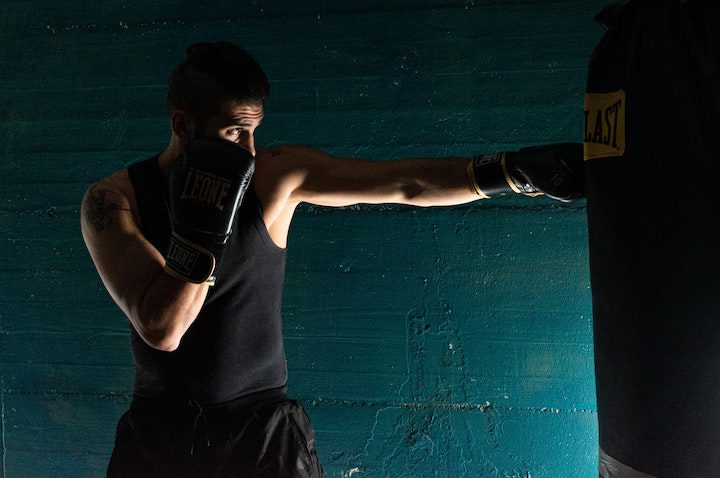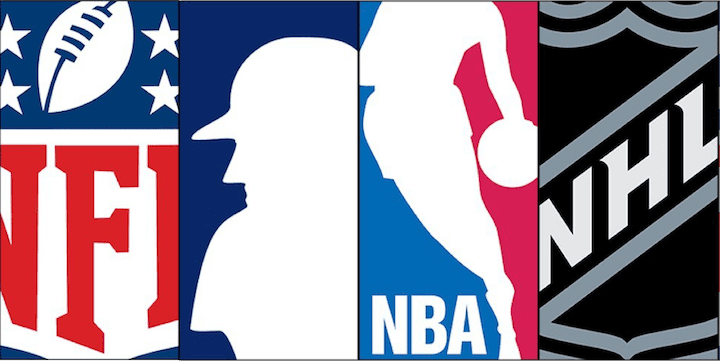Posted by Dave Kaplan
3 years ago / March 11, 2021
The Growing Presence Of Cannabis In Sports


Although cannabis is federally illegal in all but two countries around the world and included among the banned in-competition substances on the World Anti-Doping Agency list, recent studies suggest that it is the second-most consumed narcotic for athletes, behind alcohol. Yet, there is very little clear-cut evidence confirming whether cannabis is truly beneficial for athletes.
In all likelihood, the cannabis and athletics debate will continue for years to come until enough objective evidence is compiled to reach a definitive conclusion. In the meantime, we thought it would be helpful to examine the issue from a purely objective perspective, detailing both sides of the debate and why more athletes are turning to cannabis than ever before.
Why Do Athletes Use Cannabis?
There are a multitude of reasons why athletes have turned to cannabis in recent years. Some athletes take it to expedite the recovery process, others use cannabis as a natural pain-killing remedy, and many ingest the plant to alleviate stress and anxiety or microdose it to improve their focus and split-time decision making. Athletes who participate in high-octane sports have revealed that cannabis helps them get into the right mindset before a competition. Endurance sports competitors, on the other hand, have claimed that cannabis can induce a runner’s high and distort their perceptions of time before a big race or marathon.
The Pros Of combining Cannabis And Athletics

Most of the above claims are anecdotal, although some can be supported by scientific and medical research:
- Studies have shown that cannabis can increase tissue oxygenation, reduce muscle tightness, and help induce sleep more quickly, which could explain why many athletes turn to it when recovering from competitions.
- Cannabis is a proven analgesic, so it would make sense for athletes looking to replace opioids with healthier and more natural alternatives.
- Cannabis consumption is known to produce effects in our brains similar to anandamide, the same euphoric chemical produced naturally by our bodies when we exercise and jog. This would seem to substantiate the claims of runners and other endurance athletes who take the substance prior to competitions to achieve a runner’s high.
The Cons of combining Cannabis And Athletics
Not all of cannabis’s characteristics are conducive to sports. When ingested, the plant also produces the following list of effects that most would consider detrimental for any type of athletics:
- Decreased coordination
- Distorted time and spatial awareness
- Accelerated muscle fatigue
- Increased heart rate
- Hampered short-term recall
- Delayed reaction times
Moreover, claims that cannabis use can regulate and lessen the severity of anxiety and stress are yet to be scientifically substantiated. In fact, certain doses and strains of cannabis can have potentially adverse effects on users, increasing feelings of discomfort and anxiety instead of mitigating them. Likewise, no evidence exists to support the idea that cannabis can shift one’s mindset to a state that is better suited to competition.
Just how prevalent is cannabis use in North American professional sports?

Cannabis use is so widespread in North American professional sports that the reported figures are almost unbelievable. In 2018, retired NBA power forward Kenyon Martin claimed that 85% of professional basketball players smoke cannabis regularly. That number was even higher for the NFL. In a guest appearance on a Bleacher Report podcast in 2018, retired tight end Martellus Bennett estimated that 89% of the NFL used cannabis.
Retired Philadelphia Flyers enforcer Riley Cote, now a cannabis advocate and board member of the Pennsylvania Hemp Industry Council, revealed in 2017 that he believes at least half of the NHL uses cannabis either recreationally or as a means of recovery from the physical wares of the sport. Other anonymous NHL retirees have estimated that number to be as high as 70% of the league.
This widespread trend is also prevalent in Major League Baseball, which doesn’t test its players for cannabis. In 2014, former relief pitcher Dirk Hayhurst likened the amount of cannabis consumed in MLB clubhouses to that of a Cheech and Chong movie. He also claimed that the league was fully aware of the rate of cannabis consumption among its players at the time, but chose to turn a blind eye to the entire situation.
Shifting Professional Sports League Cannabis Policies

As it stands, 46.7% of teams in the NBA, NFL, NHL and MLB play in cities where recreational cannabis is legal, with the NHL leading the way at a 56.2% clip! That figure will likely rise in the near future given the legalization efforts currently underway in states such as New York, Maryland and Minnesota, and the widespread social acceptance of cannabis that is sweeping across North America.
The NHL has never included cannabis among its list of banned substances, opting to help players who test positively for high levels of THC get treatment rather than subject them to punitive fines and suspensions. And over the last 18 months, North America’s three other major sports leagues have started coming around to a similar approach.
Major League Baseball officially dropped cannabis from its banned substances list in December 2019. Players are now allowed to consume cannabis on their own time but cannot be under its effects at work or enter into commercial agreements of any type with cannabis companies.
Cannabis still remains on the NBA’s list of banned substances. But the league announced prior to its September 2020 Orlando bubble restart that it would stop testing players for cannabis amid the COVID-19 pandemic. That policy change has remained in effect for the 2020-2021 season, and several insiders believe the amendment is likely to become permanent.
Even the NFL, known for its conservative and punitive approach to cannabis use among its employees, appears to have seen the light, changing its policy on cannabis when its new collective bargaining agreement went into effect last year. Although it did not take cannabis off its list of banned substances, the NFL drastically reduced its testing period from four months to the first two weeks of training camp, raised its positive THC test threshold from 35 nanograms to 150, and abandoned its penal suspension system for cannabis offenses. Players who test positive for cannabis will now be subjected to reduced fines and may be directed to receive treatment if they are repeat offenders.
Why more research is needed:
The prohibition of cannabis, and its questionable classification as a Schedule 1 substance in the U.S., has substantially restricted the access that scientific and medical communities have to the plant for research purposes. This trend is reversing as legalization sweeps across North America, but we still know relatively little about cannabis’s properties, characteristics, and applications. Hence the necessity for more cannabis research and studies. Not only would this data definitively corroborate or refute the athletic community’s cannabis claims, but it could also provide consumers with reliable information about which strains, doses, cannabinoid ratios, and consumption methods are most optimally suited to each sport and discipline.
Filed Under:
Tagged with:
Interested in our products?
Contact us to find out how you can carry the most reliable vape hardware solutions on the market.
General Requests
Logistics
